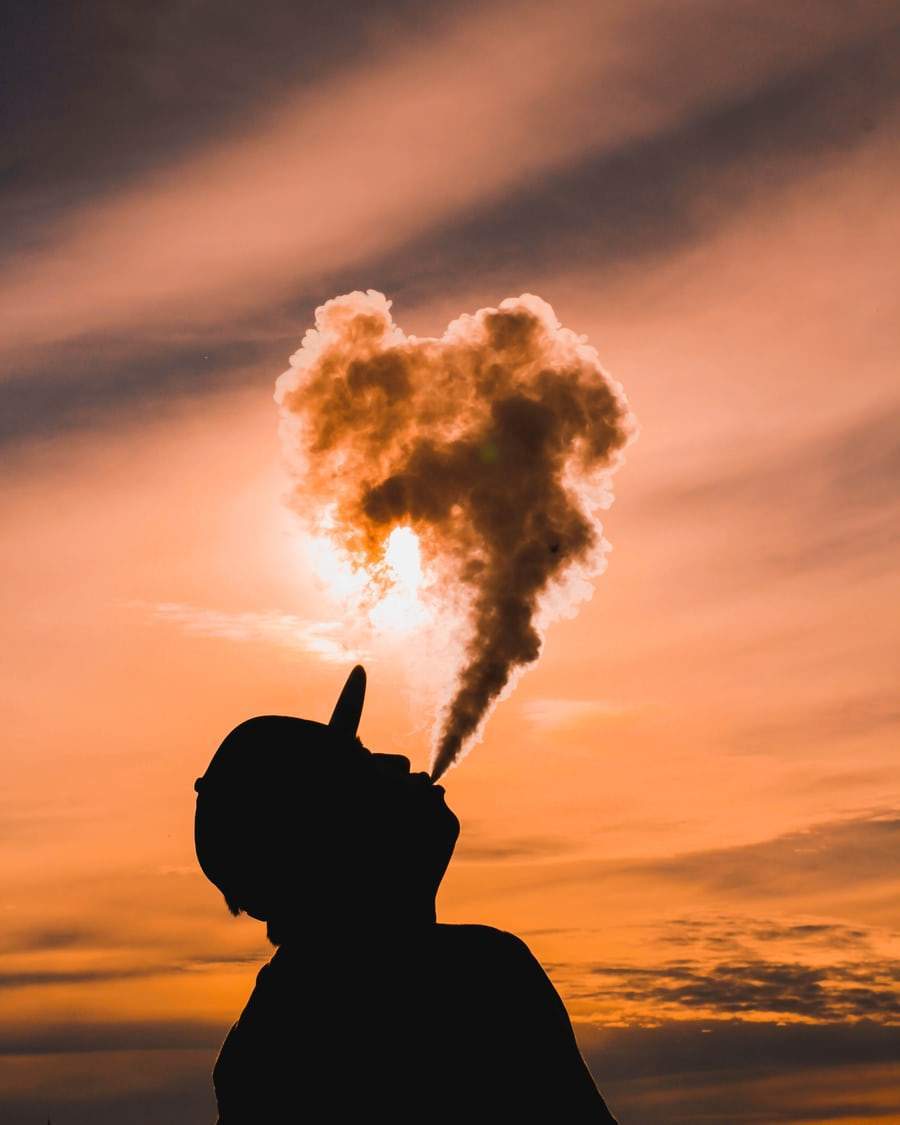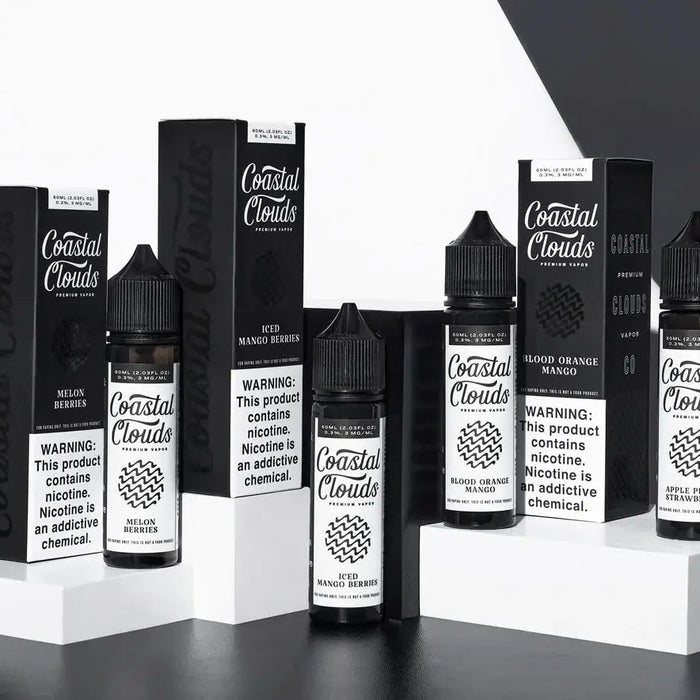If you’ve ever been vaping indoors around other people who don’t vape, chances are you’ve been scolded for exposing them to the “secondhand vape” from your device. This is a perfectly understandable reaction since we’ve been warned about the dangers of secondhand smoke. Since vaping falls under the “electronic cigarette” category, many people see the word “cigarette” and freak out. The good news is that, as of right now, if you happen to blow vapor into the nearby air, those non-vapers who inhale your secondhand clouds won't harm their overall health. But let’s take a look at what secondhand vapor is and what is in it.
SECONDHAND VAPOR: WHAT IS IT?
Whenever you vape, the aerosol (also known as clouds) is released into the air through the mouth of a vaper. Depending on the humidity of the day, these clouds may linger long enough for passersby to either inhale or be surrounded by the exhaled vapor. This cloud may look intimidating, but the vapor dissipates quickly and leaves no lingering odor. That’s because this cloud of vapor is exactly that: vapor, not smoke.
In order to produce smoke, you must light a substance with fire: leaves, tobacco, wood, or other combustible materials. Any tobacco product that is burned with fire (cigars and cigarettes) is a direct result of combustion and contains dangerous chemicals. Carbon monoxide, carcinogenic particles, volatile gases, and the toxic byproduct that comes from smoking tar are all present in the smoke from cigarettes and cigars. Secondhand smoke from cigarettes isn’t the same as directly inhaling the smoke of a cigarette. However, continuous exposure to secondhand smoke over time can cause serious health issues for the non-smoker.
With that mentality, it’s easy to see why non-vapers would become angry at the cloud of vapor heading toward them without their consent. But this is where it gets interesting. Smoke is produced by burning a material with fire (i.e. wood, leaves, etc.). But vapor is produced by simply heating vape juice within an atomizer/tank that utilizes a small coil. This coil is made of tightly strung wire and cotton, which the e-liquid passes through and changes from an e-liquid into a sweet and light aerosol (the vapor clouds). The e-liquid is made from VG, PG, flavoring, and nicotine (you can read more about the nicotine content of vape and tobacco products here). The vapor produced by that atomizer/tank does not contain the known toxins in traditional tobacco products, such as tar or carbon monoxide.
Granted, there are toxic metals and chemicals in this cloud vapor, but in extremely small amounts. These amounts are even smaller in secondhand vapor, and there are scientific tests to show the amount of toxic particles within this vapor. As of now, according to the standards set in place by the government (ever hear of OSHA?) for airborne chemical and metal exposure in the workplace, there is no evidence that second hand vapor poses a threat to non-vapers. This means that if you happen to breathe in the secondhand vapor (even if it’s blown directly into your face), you aren’t at risk for any health issues. This information may change as we learn more about vaping, but as of right now, you can stop worrying about harming the health of loved ones and strangers who might walk directly into your vape clouds.
SECONDHAND VAPORS: WHAT’S IN IT?
We briefly touched on what is in secondhand vapor in the previous paragraph, and that it does contain trace amounts of the toxic chemicals and metals that are dangerous. But they’re in such small quantities, it’s almost laughable to mention. But we’d be foolish not to mention it or try to say that it doesn’t exist, because someone will say that we lied and said there’s nothing dangerous in vapor. Instead of focusing on the miniscule particles within the secondhand vapor, let’s talk about a scene that many people are familiar with: the clouds within a vape shop. If the employees of a vape shop are enthusiastic vapers, the said vape shop should be overrun with clouds. That’s why whenever you walk into a vape shop and ask “Well, what’s a good flavor?”, these guys can answer in a heartbeat which ones they like and which ones you might like (I’ve actually found several delightful flavors doing this). Anyway, I digress.
The point is, all this vapor comes from their mouths from their lungs...but not their vapes. Let me explain. With cigarettes, the cigarettes are constantly smoking, even if you’re not taking a drag, known as “side stream.” With vapes, the vapor stops emitting as soon as the power button is released (or the user stops inhaling, with inhalation activated devices). All of the vapor that was inhaled is now in the lungs and throats of the vaper, and gets exhaled through the mouth or nose. The exhaled vapor dissipates quickly, depending on the temperature of the room, and any “secondhand vapor” is quickly dispelled throughout the room. If it is inhaled, the contents of the secondhand vapor are so minimal that even the experts agree that there is an unlikelihood of any harm or risk. Since vape juice is made from VG and PG (you can read here about the contents of common vape juices).
There’s even something called third-hand nicotine (which at this point is even less than secondhand). If you’ve ever watched a vaper vape, you’ll notice that in rooms with no wind, the vapor flows towards the ground and settles before evaporating. This “settled” nicotine lands on furniture, floors, and any objects on the floor. This presents an incredibly small case of risk for small children and pets who constantly interact with objects on the floor and furniture legs. However, since nearly 94% of nicotine in the vapor gets absorbed by the user, there isn’t enough left in the settled nicotine to even study. Vape particles are actually liquid, whereas smoke particles are solid. The liquid particles in vape are nearly impossible to study and seem to have no effect on the air quality whatsoever. One study showed that the toxin levels of chemicals in flavoring and formaldehyde in vape shops were well below the occupational exposure limit, and nicotine was nearly non-existent in the specified samples.
CONCLUSION: SO...IS SECONDHAND VAPOR DANGEROUS?
I believe it’s safe to say that while there are indeed chemicals and dangerous metals in the vape clouds of vapes, it’s not enough to warrant serious concern. As of today, there aren’t any studies that conclude that secondhand vapor is dangerous to non-vapers. The dangers, if any (and studies have yet to show), are all relative to the actual vaper. If you’re vaping, the majority of the vapor is being absorbed by the user and not the innocent bystander. This doesn’t automatically grant the vaper the power to vape wherever and whenever he/she wishes, with no regards to others. (Check here for a list of outdoor places you're not allowed to vape in).
For example, I used to vape outside my house around my sister, who has two kids. Her son was fascinated with the clouds and wanted to play with them, but my sister saw the vapor (which was well above my nephew’s head), she was furious that I was vaping in his vicinity. Vaping is often associated with smoking instead of a smoking cessation tool, so the task of educating people is quite a tedious one. And I guarantee no matter how many times you tell people that the residual vapor is not harmful to their health, they’ll stubbornly stick to their stories and tell you outright not to vape in their presence.
Vaping is still something new to many people; it will take a great amount of time for people to understand that vaping is so different from cigarette smoke. From the way vape juice is made, to the contrast of liquid particles in vapor and solid particles in smoke, to the way the vapor is produced compared to smoke needing fire to combust, and even the side stream effect in cigarettes that is absent in vape devices. Overall, this article has attempted to show that there are vast differences in the vapor of e-cigarettes and vape devices versus the smoke in cigarettes and cigars, meaning that the secondhand vapor is quite different than the secondhand smoke in tobacco products.
If you have any questions about anything in this article, you can drop a comment below or reach out to us via email or phone. We hope that this article has helped provide some answers for you as a vaper as well as a non-vaping bystander. Check in with us next time for a riveting review on either a new vape juice, a collection of our favorite flavors, or an informative article on vape questions that you might have always wondered about. Happy vaping, my friends! May your tank always be full of delicious flavor and your clouds (of vapor!) always be smooth and refreshing!




